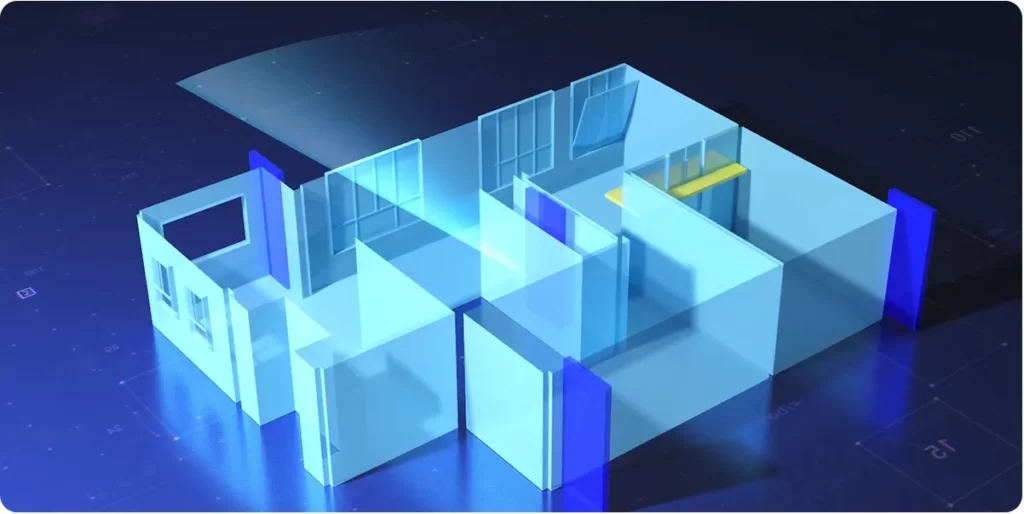Welcome to our blog post on the future trends in pallet robot technology! Automation plays a vital role in making our lives easier and more efficient in today’s ever-evolving world. Pallet robots, in particular, have revolutionized the material handling industry, providing a cost-effective and reliable solution for moving goods in warehouses and distribution centers. In this article we explore the exciting advances in pallet robot technology and how they are shaping the future of logistics.

The Rise of Autonomous Pallet Robots
Autonomous pallet robots have gained significant traction in recent years, transforming how businesses handle their materials. These robots navigate warehouses and perform complex tasks independently using advanced sensors, cameras and algorithms. With their ability to autonomously pick, transport, and stack pallets, these robots have dramatically improved operational efficiency and reduced human error.
One of the critical advantages of autonomous pallet robots is their adaptability. These robots can be easily programmed to handle various pallet sizes and shapes, making them highly versatile in different industries. Additionally, their integration with warehouse management systems enables seamless coordination between robots, conveyors, and other machinery, further optimizing workflow and minimizing downtime.
Collaborative Pallet Robots: Humans and Robots Working Together
As technology progresses, we are witnessing a shift towards collaborative pallet robots. Unlike traditional industrial robots that operate in isolation, collaborative robots, or cobots, work alongside humans, enhancing their capabilities and improving overall productivity.

Cobots are designed with built-in safety features that allow them to work near humans without the risk of injury. This opens up new possibilities for warehouse workers, who can now collaborate with robots on physically demanding tasks, such as lifting heavy pallets or navigating crowded spaces. By off-loading these strenuous activities to robots, human workers are able to focus on more complex and value-added tasks, ultimately increasing job satisfaction and reducing the number of injuries in the workplace.
Artificial Intelligence and Machine Learning
Pallet robot technology is being revolutionised by artificial intelligence (AI) and machine learning (ML). These technologies make it possible for robots to learn from their experiences, to adapt to changing environments and to make intelligent decisions.


With AI and ML, pallet robots can analyze sensor data in real-time, allowing them to detect and respond to obstacles, optimize path planning, and predict maintenance needs. This predictive capability minimizes downtime and maximizes overall operational efficiency. Moreover, AI-powered pallet robots can continuously improve their performance through iterative learning, ensuring they become even more efficient.
Integration with the Internet of Things (IoT)
The Internet of Things (IoT) has paved the way for seamless connectivity and data exchange between devices. In the context of pallet robot technology, IoT integration offers numerous benefits, including enhanced communication, remote monitoring, and predictive maintenance.

By connecting pallet robots to the IoT, manufacturers, and operators can remotely monitor their performance, track inventory levels, and receive real-time anomaly alerts. This level of visibility ensures proactive maintenance and minimizes the risk of unexpected breakdowns. Additionally, IoT-enabled pallet robots can seamlessly communicate with other IoT devices in the warehouse, such as sensors and drones, enabling efficient coordination and synchronization of operations.
Advanced Perception and Object Recognition
Accurate perception and object recognition are vital for efficiently operating pallet robots in complex warehouse environments. Recent advancements in camera technology and computer vision algorithms have significantly improved the perception capabilities of these robots.


Modern pallet robots have high-resolution cameras and sophisticated algorithms that precisely identify and locate pallets, even in challenging lighting conditions. This advanced perception allows robots to adapt to dynamic environments, detect hazards, and avoid collisions. Moreover, by integrating deep learning algorithms, pallet robots can recognize and handle objects of various shapes and sizes, further enhancing their versatility and flexibility.
Cloud Computing and Big Data Analytics
To manage and analyse large amounts of data, cloud computing and big data analytics have become indispensable tools. In the context of pallet robot technology, these technologies offer tremendous potential for optimizing operations and making data-driven decisions.
By leveraging cloud computing, manufacturers and operators can store and process vast amounts of sensor data generated by pallet robots. This data can then be analysed using advanced analytics algorithms to identify patterns, uncover hidden insights and optimise warehouse processes. For example, by analyzing historical data, operators can identify bottlenecks in the workflow and make informed decisions to optimize the layout of pallet racks or adjust staffing levels.
Integration of Robotics and Augmented Reality
Integrating robotics and augmented reality (AR) brings a new level of efficiency and accuracy to pallet robot operations. AR technology overlays virtual information in the real-world environment, providing operators with real-time guidance and instructions.
By wearing AR glasses or using handheld devices, operators can visualize the optimal picking and stacking positions for pallets, reducing the chances of errors and ensuring efficient palletization. AR technology can also be used for remote troubleshooting, where technicians can guide on-site operators through maintenance and repair tasks using interactive AR instructions. This integration of robotics and AR improves productivity, reduces training time, and enhances operational safety.
Conclusion
The future of pallet robot technology is bright and promising. Autonomous robots, collaborative robots, artificial intelligence, IoT integration, advanced perception, cloud computing, and augmented reality are exciting industry trends. As these technologies continue to evolve and mature, businesses can expect even greater efficiency, productivity, and reliability in their material handling operations.
If you are looking to embrace the future of pallet robot technology, it is essential to partner with a reliable and professional pallet robot manufacturer. At Reeman, we deliver cutting-edge pallet robot solutions tailored to your needs. Contact us today to explore how our innovative technology can transform your warehouse operations and take your business to new heights.
And remember, the future is now – so make sure you are one step ahead of the curve and harness the power of robotic pallet handling for a more efficient and productive tomorrow.























